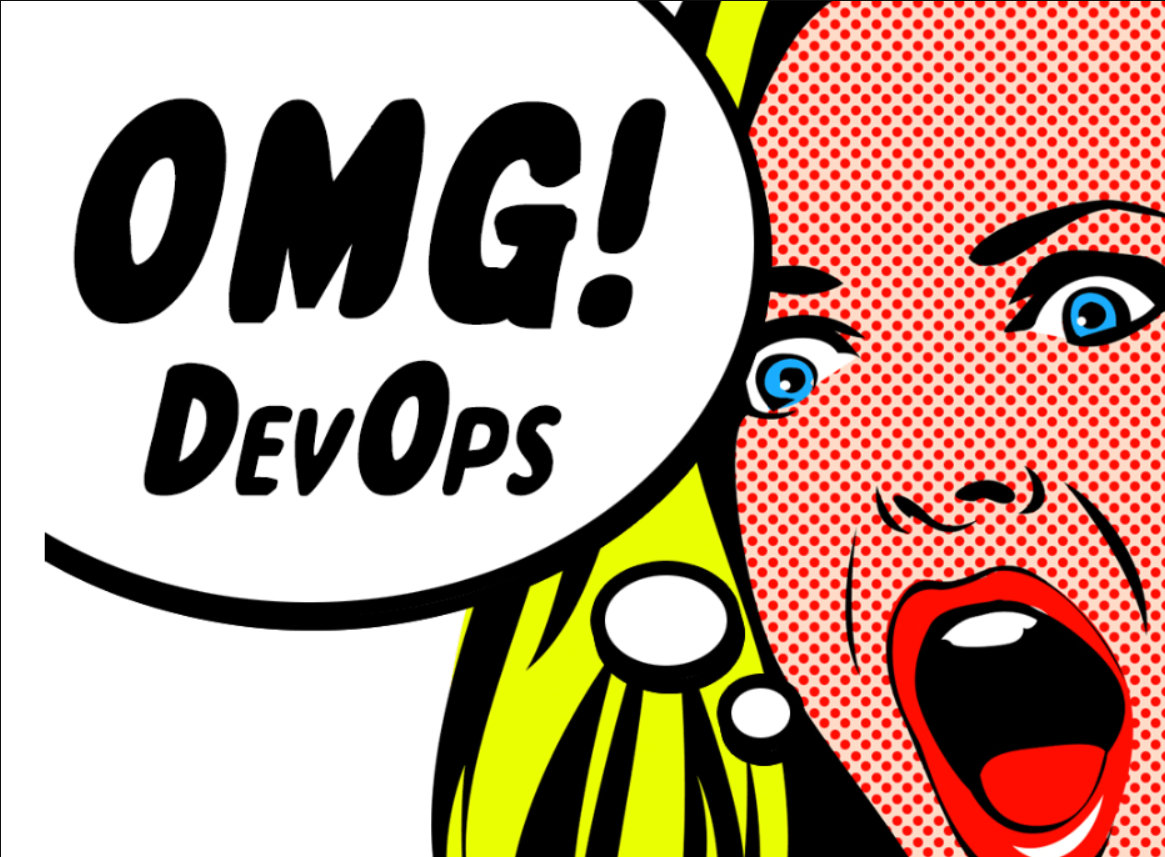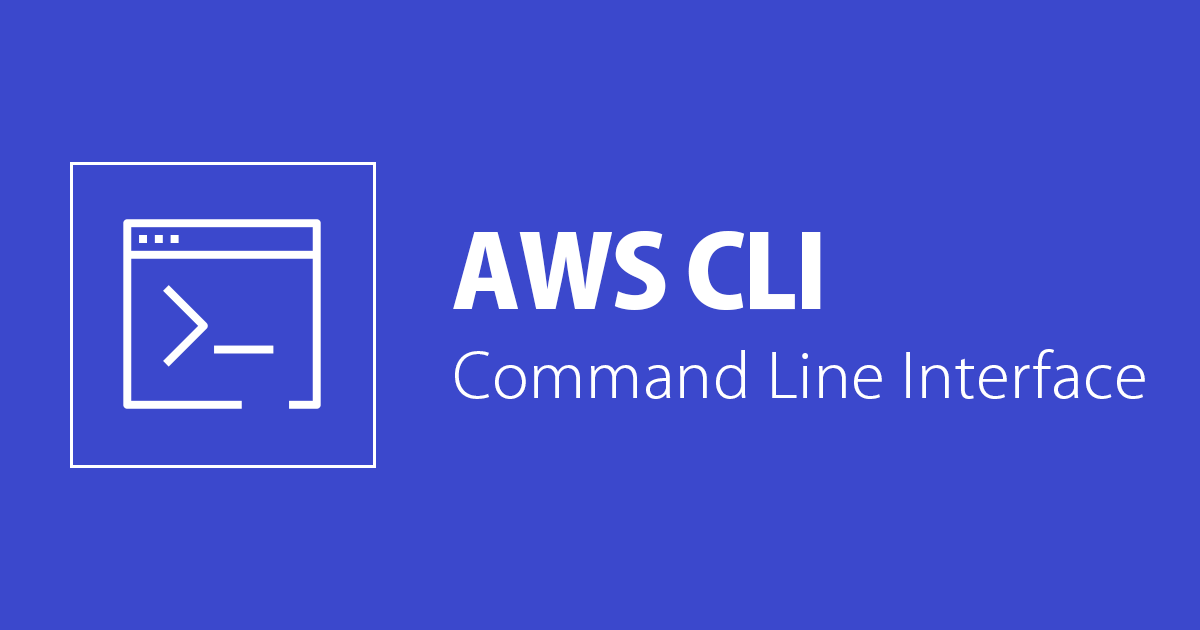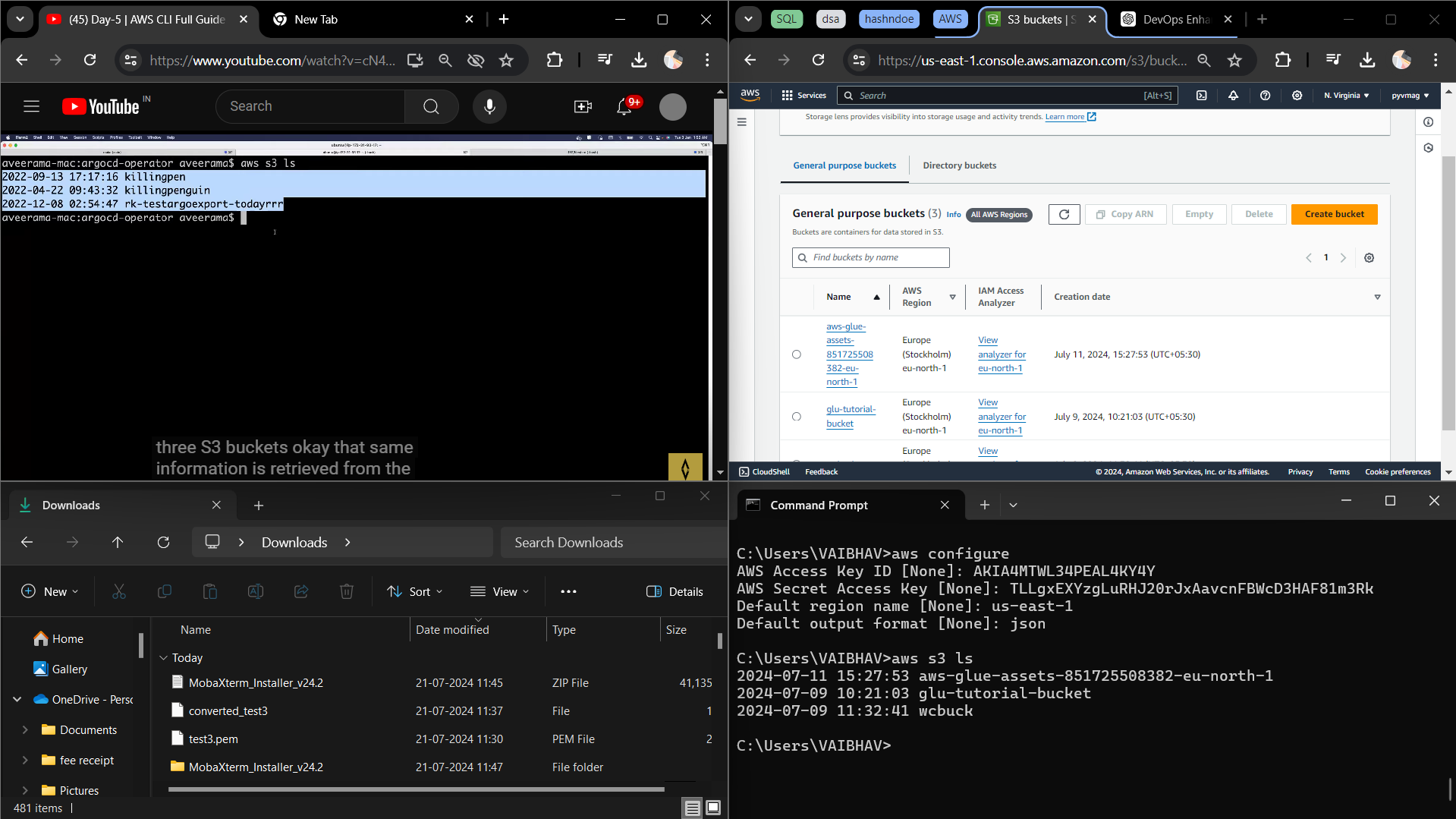3. Ec2 -> Cli -> S3
 Vaibhav Magdum
Vaibhav Magdum
Automation is the name of the game when it comes to managing AWS resources efficiently. Let’s dive into the various tools and methods you can use to automate your AWS tasks and discover why each is valuable. Here’s a rundown of AWS CLI, Boto3, CloudFormation Templates (CFT), Terraform, and AWS CDK, with a splash of humor to keep things lively!
Why Automate? Because Clicking is So Yesterday!
Let’s face it: manually managing cloud resources through endless clicks is about as fun as watching paint dry. Automation is here to save the day, making cloud management as easy as pie. With automation, you can script your way to efficiency, avoid tedious manual tasks, and ensure consistency across your cloud infrastructure. It's like having a personal assistant that works 24/7 and never needs coffee breaks!
The AWS CLI: Your Command Line Superhero
The AWS Command Line Interface (CLI) is a powerful tool that lets you interact with AWS services directly from your terminal. Think of it as your backstage pass to the AWS concert. Here’s a quick guide to getting started with AWS CLI:
Installation: Download the AWS CLI from the AWS website based on your operating system. Follow the installation instructions, and you’ll be up and running in no time.
Configuration: After installation, configure your CLI with your AWS credentials using
aws configure. This command prompts you to enter your AWS Access Key ID, Secret Access Key, default region, and output format. Here’s an example:aws configureFollow the prompts to enter your credentials.
Basic Commands: With AWS CLI, you can perform various tasks like listing S3 buckets or creating new ones. For example, to list all S3 buckets, use:
aws s3 lsTo create a new S3 bucket, use:
aws s3 mb s3://my-new-bucketThe CLI provides a straightforward way to manage AWS resources without navigating through the AWS Management Console.
Boto3: Python’s Best Pal for AWS
For those who prefer Python over command lines, Boto3 is your go-to library. It provides a Pythonic way to interact with AWS services. Whether you're automating tasks or creating new resources, Boto3 lets you do it with a few lines of code. It’s like having a Python-powered genie at your service!
AWS CloudFormation Templates (CFT): The Blueprint Method
CloudFormation Templates (CFT) allow you to define your AWS infrastructure using code. You create a JSON or YAML file that describes your resources, and CloudFormation takes care of the rest. It’s like having a detailed blueprint for your cloud setup – precise, repeatable, and easy to manage. No more manual configuration mishaps!
Terraform: The Open-Source Powerhouse
Terraform is the open-source champ of infrastructure as code. It supports multiple cloud platforms, not just AWS, making it incredibly versatile. If you’re working in a hybrid environment or juggling multiple cloud providers, Terraform is your best friend. It’s like having a universal remote for your cloud infrastructure – easy to use and compatible with just about everything.
AWS CDK: Code Your Way to Cloud Glory
The AWS Cloud Development Kit (CDK) takes infrastructure as code to the next level. It allows you to define your cloud resources using familiar programming languages like Python, TypeScript, or Java. CDK combines the power of CloudFormation with the flexibility of code, letting you model your infrastructure in a more intuitive and developer-friendly way.
How They Stack Up
AWS CLI: Direct command-line control for quick tasks. Ideal for those who want to manage AWS resources with straightforward commands.
Boto3: Python-based automation and resource management. Perfect for Python developers who want to automate AWS tasks within their applications.
CloudFormation Templates (CFT): Blueprint approach for defining and managing infrastructure. Useful for those who prefer declarative infrastructure definitions.
Terraform: Open-source tool for multi-cloud infrastructure management. Preferred for hybrid environments and multi-cloud strategies due to its flexibility and compatibility.
AWS CDK: Code-based infrastructure modeling with familiar programming languages. Best for developers who want to use conventional coding skills for cloud resource management.
In summary, automation with AWS tools like CLI, Boto3, CFT, Terraform, and AWS CDK not only streamlines your cloud operations but also boosts productivity and consistency. Each tool has its unique strengths, so choose the one that fits your needs and let automation take the heavy lifting off your shoulders.

Note: the instance for which the access key and secret key was created is deleted as it is visible in the image.
to learn more : https://youtu.be/cN4pt5KQ9eA?si=Wkxf0iWRCD-AwPsW
Subscribe to my newsletter
Read articles from Vaibhav Magdum directly inside your inbox. Subscribe to the newsletter, and don't miss out.
Written by

Vaibhav Magdum
Vaibhav Magdum
Mastering Data Science, Securing Networks, and Diving into DevOps I’m all about turning data into actionable insights with machine learning and data visualization, but my tech curiosity doesn't end there. I’m also diving into network security, building digital defenses as solid as Van Dijk’s game on the pitch. Now, I’m adding a new layer to my tech stack with DevOps and AWS! 🌐 From automating workflows to managing cloud infrastructure, I’m eager to streamline and optimize like never before. Collaboration is my thing, and I bring a methodical approach and an eye for detail to everything I tackle. When I’m not decoding algorithms or shoring up cyber defenses, you’ll find me strategizing on the football field (YNWA!), playing chess, or jamming to Patrick Watson. These passions fuel my creativity and critical thinking, crucial for navigating the fast-paced world of technology.